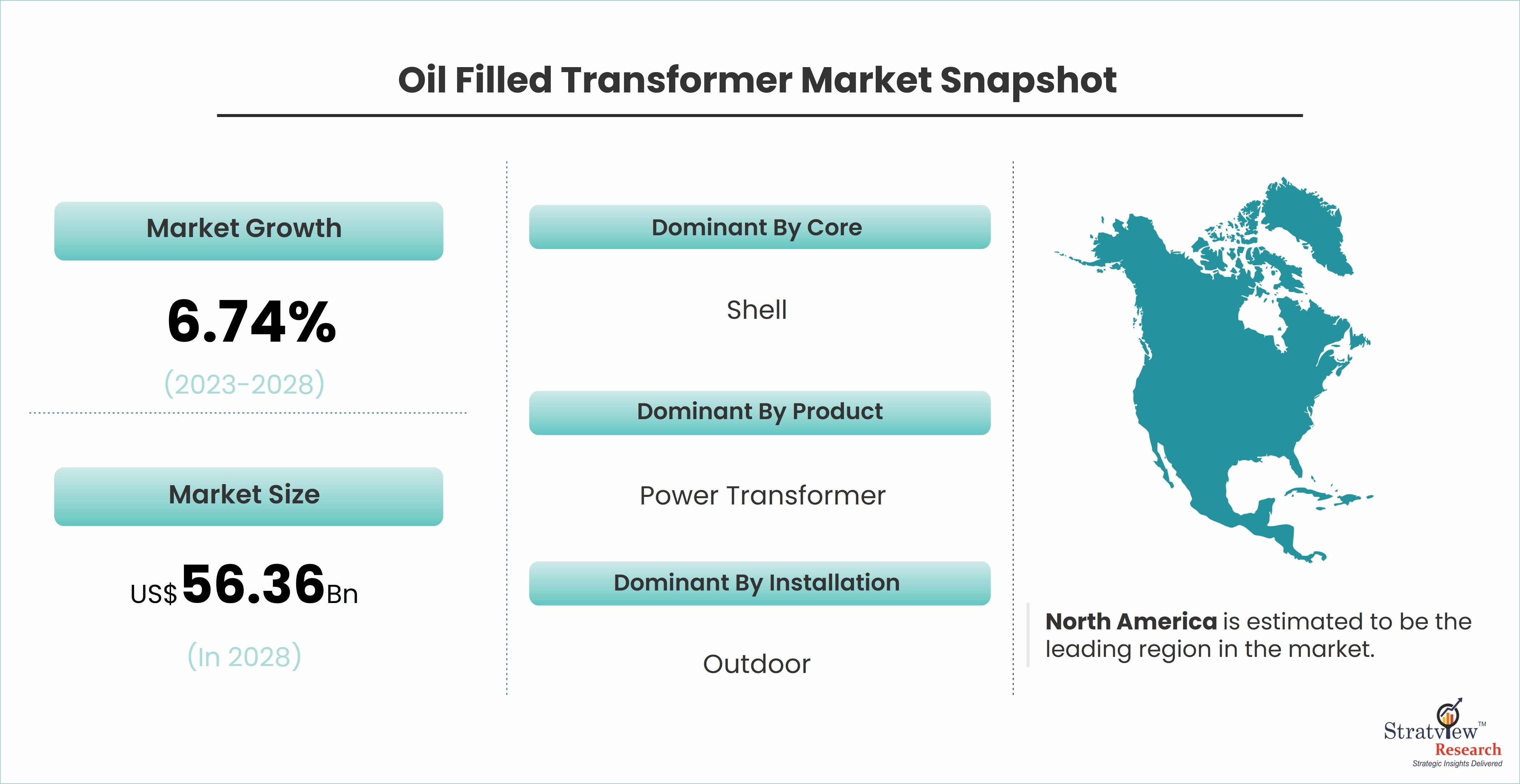The oil filled transformer market plays a crucial role in the global energy infrastructure, providing the backbone for electricity distribution and transmission. These transformers are essential for stepping up or stepping down voltage levels to ensure efficient power delivery from power plants to end-users. As the demand for electricity continues to rise, driven by industrialization, urbanization, and the expansion of renewable energy sources, the oil filled transformer market is poised for significant growth. This comprehensive guide explores the key aspects of this market, including its importance, trends, challenges, and future prospects.
According to Stratview Research, the oil filled transformer market was estimated at USD 38 billion in 2022 and is likely to grow at a CAGR of 6.74% during 2023-2028 to reach USD 56.36 billion in 2028.
Importance of Oil Filled Transformers
Oil filled transformers are widely used in power grids due to their superior cooling and insulating properties. The oil serves as both a coolant and an insulator, preventing overheating and ensuring reliable operation under high loads. This makes them indispensable in high-voltage applications, such as power transmission and large industrial installations. The robustness and efficiency of oil filled transformers contribute to the stability and reliability of the electrical grid, minimizing the risk of outages and power failures.
Market Trends
- Technological Advancements: Innovations in transformer design and manufacturing are enhancing the performance and lifespan of oil-filled transformers. Advanced monitoring systems and smart grid technologies are being integrated to improve efficiency and reduce maintenance costs.
- Renewable Energy Integration: The shift towards renewable energy sources, such as wind and solar power, is driving the demand for oil-filled transformers. These transformers are essential for connecting renewable energy plants to the grid and managing the variable output from these sources.
- Urbanization and Industrialization: Rapid urbanization and industrial growth, particularly in developing regions, are increasing the demand for reliable electricity supply. This, in turn, is boosting the need for efficient power transmission and distribution infrastructure, including oil-filled transformers.
Challenges
Despite their advantages, oil filled transformers face several challenges:
- Environmental Concerns: The use of mineral oil, a non-biodegradable and potentially hazardous substance, raises environmental concerns. Leaks or spills can cause soil and water contamination, leading to stricter regulations and the search for eco-friendly alternatives.
- Maintenance Costs: Regular maintenance is crucial to ensure the longevity and performance of oil filled transformers. This includes monitoring oil quality and performing periodic inspections, which can be costly and time-consuming.
- Technological Disruptions: The emergence of solid-state transformers and other advanced technologies poses a potential threat to the traditional oil filled transformer market. These new technologies offer benefits such as smaller size, lower weight, and improved efficiency.
Future Prospects
The future of the oil filled transformer market looks promising, driven by the ongoing need for robust and reliable power infrastructure. Efforts to develop biodegradable and less hazardous insulating oils are gaining momentum, addressing environmental concerns. Additionally, advancements in monitoring and diagnostics are expected to reduce maintenance costs and extend the operational lifespan of these transformers.
Conclusion
Understanding the oil filled transformer market is essential for stakeholders in the energy sector. As the demand for electricity continues to grow, driven by urbanization, industrialization, and renewable energy integration, oil-filled transformers will remain a critical component of the global power infrastructure. By addressing environmental concerns and embracing technological advancements, the market is set to evolve, ensuring a reliable and efficient power supply for the future.

